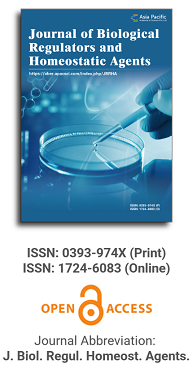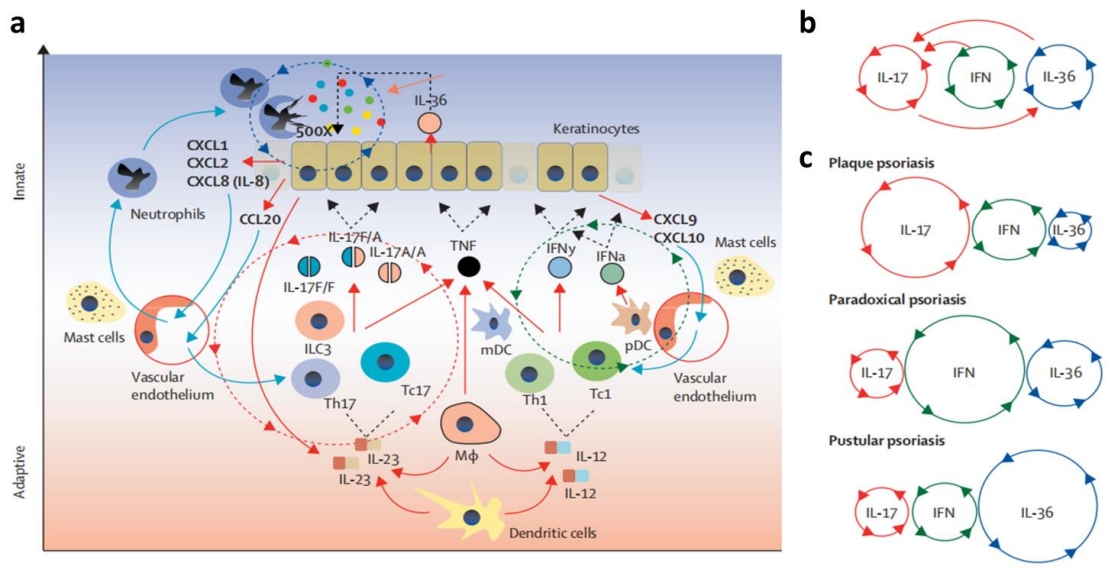
Publication Frequency
Quarterly since 2025
Journal Articles
Search
Search scope
Journal Center
Asia Pacific Academy of Science Pte. Ltd. (APACSCI) specializes in international journal publishing. APACSCI adopts the open access publishing model and provides an important communication bridge for academic groups whose interest fields include engineering, technology, medicine, computer, mathematics, agriculture and forestry, and environment.
Volume Arrangement
2025
Featured Articles

Psoriasis is a common, chronic, and inflammatory skin disease. Macrophages account for about 61.3% of the inflammatory cells infiltrating psoriatic lesions. Modulating macrophage polarization, inhibiting their infiltration, and targeting the secretion of inflammatory factors and associated inflammatory pathways by these cells can alleviate psoriasis symptoms and inflammation. Moreover, nanomaterials as novel drug carriers, offer unique advantages such as large surface area, easy modification, high biocompatibility, good biodegradability, enhanced systemic adsorption, etc. Nanomaterials have great potential for efficient drug delivery and release, as well as improving therapeutic efficacy while reducing adverse effects. By systematically addressing the role of macrophages in psoriasis pathogenesis and the potential of nanomaterials in treating psoriasis through modulating macrophages, this review enhances our understanding of the disease mechanism and holds promise for novel therapeutic breakthroughs and advancements in the future treatment of psoriasis.
Rhamnazin Inhibits Malignant Progression of ProstateCancer Cells via DPP4/JAK/STAT Signaling Pathway
Article ID: 3513
Vol 39, Issue 1, 2025
DOI: https://doi.org/10.23812/j.biol.regul.homeost.agents.20253901.14
Vol 39, Issue 1, 2025
Received: 19 January 2023; Accepted: 7 June 2023; Available online: 16 January 2025; Issue release: 31 January 2025
Download PDF
Abstract
Background: Rhamnazin is a natural dimethoxyflavonoid compound and Rhamnazin has been reported to have antitumor activity. This work is performed to study the function of Rhamnazin in prostate cancer (PCa) cells and its mechanism.
Methods: Rhamnazin (20 µM) was used to treat 22Rv1 and C4-2B cells, and the cells treated with dimethyl sulfoxide (DMSO)
were set as the control group. To investigate the role of dipeptidyl peptidase 4 (DPP4) in mediating the biological effects of Rhamnazin, DPP4 overexpression plasmids were transfected into the PCa cell lines. Cell counting kit-8 method was employed to detect
the proliferation; apoptosis and cell cycle were detected by flow cytometry. the target genes of Rhamnazin were predicted in
Traditional Chinese Medicine Systems Pharmacology (TCMSP) database. Gene Ontology and Kyoto Encyclopedia of Genes and
Genomes enrichment analysis of target genes of Rhamnazin was performed using the Database for Annotation, Visualization
and Integrated Discovery (DAVID database). Human Protein Atlas database was utilized to identify genes associated with poor
PCa prognosis. GEPIA database was used to validate the expression and prognosis of DPP4 in PCa. The LinkedOmics database
was used to analyze the signaling pathway related to DPP4 in PCa. Quantitative polymerase chain reaction was performed to
detect DPP4 mRNA levels. Western blot assays were performed to detect the expression levels of DPP4, phosphorylated (p-)
Janus kinase 1 (JAK1) and p-signal transducer and activator of transcription 3 (STAT3).
Results: Functional assays confirmed that Rhamnazin inhibited the proliferation of PCa cells (p < 0.05), and promoted apoptosis
(p < 0.05) and blocked the cell cycle progression (p < 0.05). In addition, Rhamnazin significantly inhibited the expression of DPP4
(p < 0.05), and up-regulating DPP4 reversed the effects of Rhamnazin (p < 0.05). It was further found that DPP4 was associated
with JAK/STAT signaling and Rhamnazin inhibited the expression of p-JAK1 (p < 0.05) and p-STAT3 (p < 0.05) through DPP4.
Conclusion: Rhamnazin has the potential to kill PCa cells via DPP4/JAK/STAT axis.
Keywords
prostate cancer; Rhamnazin; DPP4; JAK/STAT pathway
References
Supporting Agencies
Copyright (c) 2025 Shouyu Xue,Aimin Geng,Ting Lian

This site is licensed under a Creative Commons Attribution 4.0 International License (CC BY 4.0).
Editor-in-Chief

Medical Genetics, University of Torino Medical School, Italy
Co-Editor-in-Chief

Department of Biomedical, Surgical and Dental Sciences, University of Milan, Italy
Indexing & Archiving
News & Announcements
2025-02-01
In addition to the first issue that has already been published by the original publisher, there will be four more issues released this year, with scheduled publication dates in March, June, September, and December respectively.
2025-01-21
Starting from Volume 39 Issue 2 (2025), the ownership of Journal of Biological Regulators and Homeostatic Agents (ISSN: 0393-974X (P); 1724-6083 (O)) will be transferred from Biolife Sas to Asia Pacific Academy of Science Pte. Ltd. As of 21 January 2025, authors should make submissions to the new journal system and follow the author guidelines. Asia Pacific Academy of Science Pte. Ltd. will take over the publication of manuscripts being processed.

